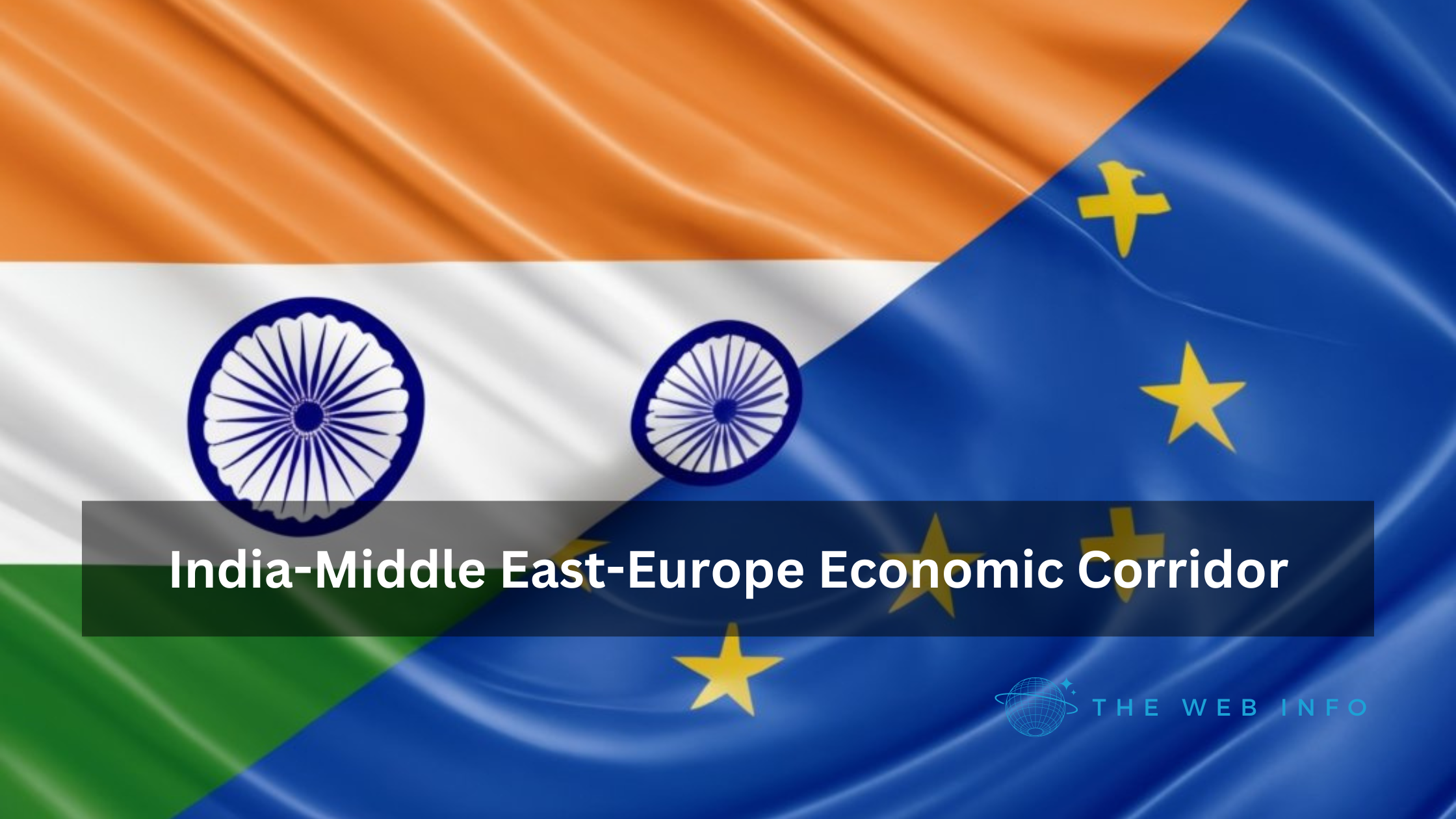The India-Middle East-Europe Economic Corridor is expected to attract additional Asian countries, boosting manufacturing, food security, and supply chains within its sphere of influence.
Launching the India-Middle East-Europe Economic Corridor, PM Modi said that it would give a new direction to connectivity and sustainable development.

Context
Germany, Italy, and the European Union have announced an MOU to develop the India-Middle East-Europe Economic Corridor. This ambitious project is set to revolutionize trade and connectivity between the regions involved. The corridor aims to enhance connectivity and economic integration between India, the Middle East, and Europe. With the development of a robust railway network, efficient ports, and other necessary infrastructure, trade and economic growth are expected to witness a substantial boost.
The United States and other partners have also expressed their interest in joining this landmark initiative. Their involvement will focus on promoting clean energy, expanding access to electricity, and further strengthening trade and manufacturing along the corridor. This collective effort emphasizes the commitment of multiple nations toward fostering sustainable development and forging stronger economic ties across continents.
The potential impact of this project cannot be understated, as it paves the way for greater opportunities and a brighter future for all involved.
Summary
In a bid to enhance trade relationships, Prime Minister Narendra Modi, alongside other global leaders, unveiled the India-Middle East-Europe connectivity corridor during the G20 Summit on Saturday. This corridor represents a potential alternative to China’s Belt and Road initiative, which has burdened several developing nations, including Pakistan, Kenya, Zambia, Laos, and Mongolia, with substantial debt.
During the launch, Prime Minister Modi expressed his optimism that this corridor would provide a fresh impetus to connectivity and sustainable development. He stated, “In the future, this corridor will serve as an effective channel for economic integration between India, the Middle East, and Europe.”
Prime Minister Modi hailed the corridor’s launch as a “historic” achievement, foreseeing its significance in fostering economic integration among India, West Asia, and Europe, thereby contributing to global connectivity and development.
Highlighting the essential role of robust connectivity and infrastructure in the progress of human civilization, the prime minister underscored that India has accorded the highest priority to these aspects in its development journey.
US President Joe Biden commended the initiative, emphasizing its significance in building sustainable, resilient infrastructure and shaping a better future. He expressed gratitude to Prime Minister Modi for his dedication to this vision, reflecting the united commitment of nations toward this goal.
European Commission President Ursula von der Leyen also described the launch as a “historic” moment.
During the corridor’s launch, Prime Minister Modi revealed that investments were being made in social, digital, and financial infrastructure in addition to the physical infrastructure.
The corridor aims to connect railways and port facilities across the Middle East, encompassing countries like the United Arab Emirates, Saudi Arabia, Jordan, and Israel. It holds the potential to accelerate trade between India and Europe by up to 40 percent.
Pramit Pal Chaudhuri, South Asia practice head at the Eurasia Group, noted that this project could revolutionize trade routes. In the future, a shipping container departing from Mumbai and traveling through the Suez Canal to Europe could potentially take a rail route from Dubai to Haifa in Israel and onward to Europe. This transformation could lead to significant savings in both time and money.
United States Memorandum
September 09, 2023
Memorandum of Understanding on the Principles of an India – Middle East – Europe Economic Corridor
Pursuant to this Memorandum of Understanding, the Governments of the Kingdom of Saudi Arabia, the European Union, the Republic of India, the United Arab Emirates (UAE), the French Republic, the Federal Republic of Germany, the Italian Republic, and the United States of America (the “Participants”) commit to work together to establish the India – Middle East – Europe Economic Corridor (IMEC). The IMEC is expected to stimulate economic development through enhanced connectivity and economic integration between Asia, the Arabian Gulf, and Europe.
The IMEC will be comprised of two separate corridors, the east corridor connecting India to the Arabian Gulf and the northern corridor connecting the Arabian Gulf to Europe. It will include a railway that, upon completion, will provide a reliable and cost-effective cross-border ship-to-rail transit network to supplement existing maritime and road transport routes – enabling goods and services to transit to, from, and between India, the UAE, Saudi Arabia, Jordan, Israel, and Europe.
Along the railway route, Participants intend to enable the laying of cable for electricity and digital connectivity, as well as pipe for clean hydrogen export. This corridor will secure regional supply chains, increase trade accessibility, improve trade facilitation, and support an increased emphasis on environmental social, and government impacts.
Participants intend that the corridor will increase efficiencies, reduce costs, enhance economic unity, generate jobs, and lower greenhouse gas emissions – – resulting in a transformative integration of Asia, Europe and the Middle East.
In support of this initiative, Participants commit to work collectively and expeditiously to arrange and implement all elements of these new transit 2 routes, and to establish coordinating entities to address the full range of technical, design, financing, legal and relevant regulatory standards.
Today’s Memorandum of Understanding is the result of initial consultations. It sets forth political commitments of the Participants and does not create rights or obligations under international law. The Participants intend to meet within the next sixty days to develop and commit to an action plan with relevant timetables.
###
